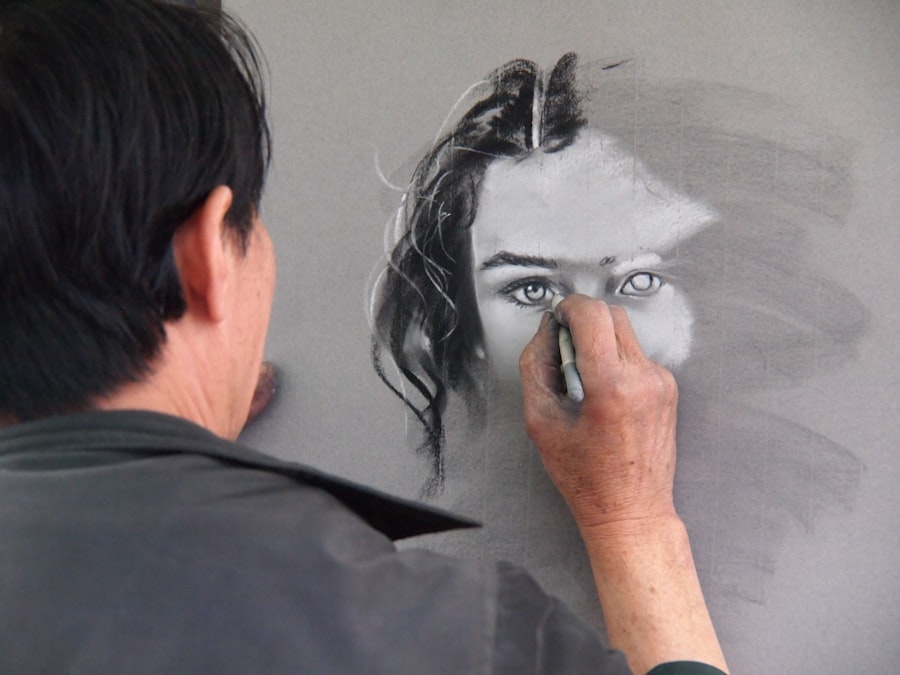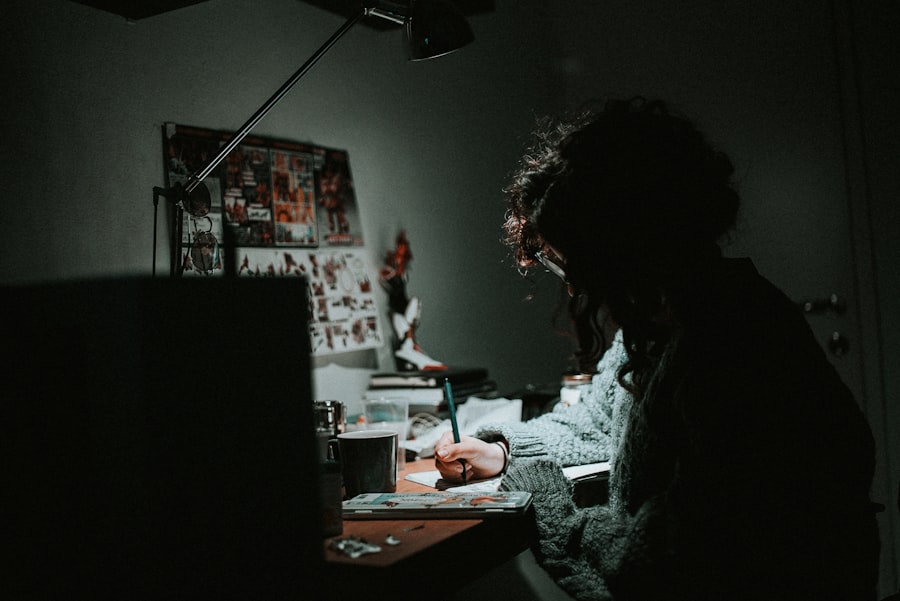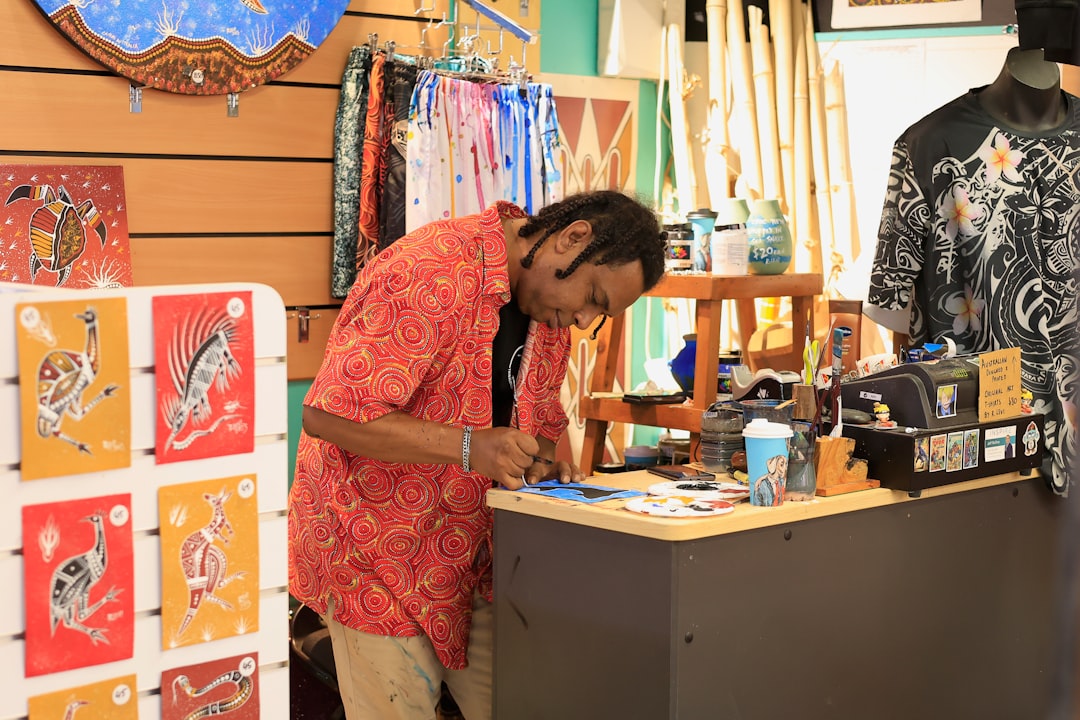In recent years, you may have noticed a significant shift in the world of illustration, largely driven by advancements in artificial intelligence. AI technologies have begun to permeate various creative fields, and illustration is no exception. With the development of sophisticated algorithms and machine learning techniques, AI can now generate images that are not only visually appealing but also contextually relevant.
This rise of AI in illustration has opened up new avenues for artists and designers, allowing them to explore innovative styles and techniques that were previously unimaginable. As you delve deeper into this phenomenon, you might find it fascinating how AI tools can analyze vast datasets of existing artwork to create unique illustrations. These tools can mimic various artistic styles, from classical to contemporary, enabling you to experiment with different aesthetics without the extensive time commitment typically required for traditional methods.
The accessibility of these technologies has democratized the field of illustration, allowing aspiring artists to create professional-quality work with relative ease. However, this rapid evolution also raises questions about the future of traditional illustration and the role of human creativity in a landscape increasingly dominated by machines.
Key Takeaways
- AI is revolutionizing the field of illustration, offering new tools and techniques for artists to explore.
- Traditional illustration techniques are being impacted by AI, leading to a shift in the way artists create and collaborate.
- Creativity remains a crucial element in AI-generated illustrations, as it is the human input that drives the artistic vision.
- The future of illustration jobs is evolving in the age of AI, with new opportunities and challenges for artists to navigate.
- AI in illustration offers advantages such as efficiency and accessibility, but also has limitations in capturing the depth of human emotion and experience.
The Impact of AI on Traditional Illustration Techniques
As AI continues to gain traction in the illustration world, you may wonder how it affects traditional techniques that have been cherished for generations. The introduction of AI tools has certainly transformed the way illustrators approach their craft. For instance, many artists now use AI-generated sketches as a foundation for their work, allowing them to focus on refining and adding personal touches to their illustrations.
This hybrid approach can enhance creativity, as it combines the efficiency of AI with the unique vision of the artist. However, this shift also poses challenges for traditional illustrators who may feel threatened by the rise of AI-generated art. You might find that some artists are concerned about losing their unique voice in a sea of algorithmically produced images.
The fear is that as AI becomes more prevalent, the value of hand-drawn illustrations may diminish. Yet, it’s essential to recognize that while AI can replicate styles and generate images quickly, it lacks the emotional depth and personal narrative that human artists bring to their work. This tension between tradition and innovation is shaping a new dialogue within the illustration community.
The Role of Creativity in AI-Generated Illustrations

When considering AI-generated illustrations, you may be intrigued by the question of creativity. Can machines truly be creative, or are they merely sophisticated tools that mimic human artistry? While AI can produce visually stunning images based on learned patterns and styles, it lacks the intrinsic understanding of context, emotion, and intention that you possess as a human creator.
Your ability to infuse personal experiences and cultural references into your work is what sets you apart from an algorithm. Moreover, creativity is not just about producing aesthetically pleasing images; it involves problem-solving, storytelling, and emotional resonance. As you explore the capabilities of AI in illustration, you might find that these tools can serve as a source of inspiration rather than a replacement for your creative process.
By collaborating with AI, you can push the boundaries of your imagination and discover new possibilities that challenge conventional artistic norms. This partnership between human creativity and machine efficiency can lead to groundbreaking work that reflects both your vision and the innovative potential of technology.
The Future of Illustration Jobs in the Age of AI
| Metrics | Current Status | Predicted Future |
|---|---|---|
| Number of Illustration Jobs | Increasing | Stable |
| Impact of AI on Illustration Jobs | Minimal | Moderate |
| Skills Required | Artistic and Creative | Artistic, Creative, and Technical |
| Job Flexibility | Varies | Increased |
As you contemplate the future of illustration jobs in an era dominated by AI, it’s natural to feel a mix of excitement and apprehension. On one hand, the integration of AI into the creative process has the potential to streamline workflows and increase productivity. You may find that tasks such as generating initial concepts or creating variations on a theme can be accomplished more quickly with AI assistance.
This efficiency could allow you to focus on higher-level creative decisions and complex projects that require your unique expertise. On the other hand, there is a legitimate concern about job displacement as AI becomes more capable of producing high-quality illustrations. You might worry about how this technology will impact freelance illustrators or those working in industries heavily reliant on visual content.
However, it’s important to remember that while AI can automate certain aspects of illustration, it cannot replicate the nuanced understanding and emotional connection that human artists bring to their work. As the industry evolves, new roles may emerge that emphasize collaboration between humans and machines, allowing you to leverage your skills in ways that were previously unimaginable.
The Advantages and Limitations of AI in Illustration
As you explore the advantages and limitations of AI in illustration, you may find yourself weighing the benefits against potential drawbacks. One significant advantage is speed; AI can generate images in a fraction of the time it would take a human artist. This efficiency can be particularly beneficial in fast-paced industries where deadlines are tight and demand for visual content is high.
Additionally, AI tools can assist with repetitive tasks such as resizing or color correction, freeing up your time for more creative pursuits. However, despite these advantages, there are inherent limitations to consider. While AI can produce impressive visuals, it often lacks the ability to convey deeper meanings or emotions that resonate with viewers on a personal level.
You might notice that many AI-generated images feel sterile or generic compared to those crafted by human hands. Furthermore, reliance on AI tools can lead to homogenization in style and concept, potentially stifling innovation within the field. As you navigate this landscape, it’s crucial to strike a balance between utilizing AI for efficiency while maintaining your unique artistic voice.
The Ethical and Legal Implications of AI-Generated Art

As you engage with the world of AI-generated art, ethical and legal implications inevitably come into play. One pressing concern is copyright ownership; when an AI generates an image based on existing works, questions arise about who holds the rights to that creation. You may find yourself pondering whether it’s fair for an artist to claim ownership over an image produced by an algorithm trained on their work without consent.
This gray area presents challenges for both creators and legal systems as they grapple with defining authorship in an age where machines play an increasingly prominent role. Additionally, ethical considerations extend beyond copyright issues. You might reflect on how AI-generated art could perpetuate biases present in training data or contribute to a lack of diversity in artistic representation.
As an illustrator, it’s essential to remain vigilant about these concerns and advocate for responsible use of technology within your field. By engaging in conversations about ethics and legality, you can help shape a future where both human creativity and technological innovation coexist harmoniously.
How Illustrators Can Adapt to the Changing Landscape
In light of these developments, you may be wondering how illustrators can adapt to the changing landscape brought about by AI technology. One effective strategy is to embrace lifelong learning; staying informed about emerging tools and techniques will empower you to leverage AI effectively in your work. By familiarizing yourself with various software programs and understanding their capabilities, you can enhance your skill set and remain competitive in an evolving market.
Moreover, collaboration is key in this new era. You might consider partnering with technologists or other creatives who specialize in AI to explore innovative projects together. By combining your artistic vision with their technical expertise, you can create unique works that push boundaries and challenge conventional notions of illustration.
Embracing change rather than resisting it will enable you to thrive in a landscape where human creativity and artificial intelligence intersect.
The Intersection of AI and Human Creativity in Illustration
As you navigate this intersection between AI and human creativity in illustration, it’s essential to recognize that both elements have distinct yet complementary roles. While AI excels at processing vast amounts of data and generating images based on learned patterns, your creativity brings depth, context, and emotional resonance to your work. This synergy can lead to exciting collaborations where technology enhances rather than replaces human artistry.
You might find inspiration in exploring how AI can serve as a creative partner rather than a competitor. For instance, using AI-generated sketches as starting points for your illustrations allows you to infuse your personal style while benefiting from the efficiency of technology. By embracing this collaborative mindset, you can unlock new avenues for expression and innovation within your artistic practice.
The Importance of Human Touch in Illustration
Despite the advancements made by AI in generating illustrations, there remains an undeniable importance placed on the human touch in art. As an illustrator, your ability to convey emotion through brushstrokes or line work is something that machines cannot replicate. The nuances of your hand movements—the imperfections that make each piece unique—are what resonate with viewers on a deeper level.
You may find that audiences are drawn to artwork not just for its visual appeal but also for the story behind it. Furthermore, the human touch fosters connection between artist and audience. When viewers engage with your work, they often seek a sense of authenticity or relatability that comes from knowing there’s a person behind the creation process.
As you continue to explore the role of technology in illustration, it’s crucial to remember that while AI can assist in generating images, it cannot replace the emotional connection forged through human artistry.
The Potential for Collaboration between AI and Human Illustrators
As you consider the potential for collaboration between AI and human illustrators, it becomes clear that this partnership holds immense promise for innovation within the field. By leveraging AI tools as creative assistants rather than replacements, you can enhance your artistic process while maintaining your unique voice. For example, using AI algorithms to generate variations on a theme allows you to explore multiple directions quickly before honing in on what resonates most with your vision.
This collaborative approach not only streamlines workflows but also encourages experimentation—an essential aspect of any creative endeavor. You might find yourself inspired by unexpected outcomes generated by AI algorithms, leading you down paths you may not have explored otherwise. Embracing this synergy between human intuition and machine efficiency can result in groundbreaking work that reflects both your artistry and technological advancements.
Nurturing the Unique Value of Human-Crafted Illustrations in a Digital World
In a digital world increasingly influenced by technology, nurturing the unique value of human-crafted illustrations becomes paramount for artists like yourself. While AI-generated art offers convenience and speed, it’s essential to emphasize what sets your work apart: authenticity, emotion, and personal narrative. As you navigate this landscape filled with algorithmically produced images, consider ways to highlight these qualities in your own creations.
You might explore storytelling techniques or delve into themes that resonate deeply with your experiences as an artist.
In doing so, you reinforce the idea that while technology may enhance certain aspects of illustration, it cannot replicate the rich tapestry woven from human experience—a tapestry that continues to hold immense value in our increasingly digital world.
In conclusion, as you reflect on the rise of AI in illustration and its multifaceted impact on traditional techniques, creativity, job prospects, ethics, collaboration opportunities, and more, it becomes evident that this evolving landscape presents both challenges and opportunities for artists like yourself. By embracing change while nurturing your unique voice as a creator—one rooted in emotion and authenticity—you can navigate this new era with confidence and continue to thrive as an illustrator amidst technological advancements.
The rise of artificial intelligence in creative fields has sparked significant debate, particularly concerning its impact on traditional roles such as illustration. As AI technology continues to advance, many illustrators are concerned about the potential for AI to take over their jobs. This topic is explored in depth in a related article on the implications of AI in various industries. For more insights, you can read the full article on howwealthgrows.
com/’>How Wealth Grows, which discusses the broader economic and employment effects of AI integration.
FAQs
What is AI?
AI, or artificial intelligence, refers to the simulation of human intelligence in machines that are programmed to think and act like humans. This includes tasks such as learning, problem-solving, and decision-making.
What are illustration jobs?
Illustration jobs involve creating visual representations of ideas, concepts, or stories. Illustrators use various mediums such as drawing, painting, digital tools, and photography to create their work.
Is AI taking over illustration jobs?
AI is beginning to impact the illustration industry by offering tools and software that can assist in creating illustrations. While AI can automate certain aspects of the illustration process, it is not yet capable of fully replacing human creativity and artistic expression.
How is AI impacting illustration jobs?
AI is impacting illustration jobs by providing tools and software that can assist illustrators in tasks such as generating ideas, creating drafts, and refining designs. This can streamline the illustration process and free up time for artists to focus on more creative aspects of their work.
What are the benefits of AI in illustration jobs?
The benefits of AI in illustration jobs include increased efficiency, improved productivity, and access to advanced tools and techniques. AI can also help artists explore new creative possibilities and expand their skill set.
What are the limitations of AI in illustration jobs?
The limitations of AI in illustration jobs include the inability to replicate human creativity, emotion, and artistic intuition. AI also lacks the ability to understand complex concepts and narratives, which are essential in many illustration projects.
